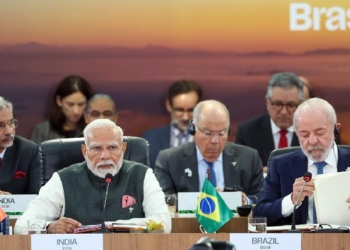New Delhi: Monsoon in northern and north-western states in India is in full swing, with many states like Delhi, Haryana, Himachal Pradesh grappling with floods and landslides.
Data available on Indian Meteorological Department (IMD) website show large-excess rainfall in seven out of 36 meteorological subdivisions during the first two weeks of July.
Large excess rainfall means more than 60 per cent rain recorded against normal (long-period average).
According to IMD data, subdivisions with large excess rainfall during July 1-14 are Himachal Pradesh; Saurashtra and Kutch; Punjab; Haryana; Chandigarh and Delhi; West Rajasthan; West Uttar Pradesh; and Uttarakhand.
Himachal Pradesh, in the first two weeks of the month, has already received more downpour than it does during the entire month. So far 272.9 mm of rainfall has been recorded here against a normal of 101.9 mm (168 per cent excess). For this sub division, normal for the entire July is 273 mm.
Similarly, Surashtra and Kutch subdivision has also surpassed the July normal of 195.6 mm in the first 14 days, with 195.9 mm rainfall (159 per cent excess) so far.
Next in the list is Punjab with 153.8 mm rainfall so far which is 124 per cent above normal. Haryana, Chandigarh and Delhi sub divisions have seen 133.8 mm downpour during the first two weeks, making it 110 per cent above normal of 63.6 mm.
West Rajasthan sub division has also received more than double rainfall. So far 74.9 mm of rainfall has been witnessed here, with normal being 36.8 during July 1-14.
Rainfall in West Uttar Pradesh in July has been 187.2 mm so far which is 90 per cent above normal. Similarly, Uttarakhand, which has witnessed 298.7 mm (71 per cent excess) rain, with normal being 174.5 mm.
Apart from these seven sub divisions East Rajasthan has also received 54 per cent more than normal. So far in July, it has seen 132.4 mm of rain against 85.8 per cent of normal.
Notably, except for Haryana, Chandigarh and Delhi, all of these sub divisions generally witness most of monsoon rainfall during July only.
Haryana, Chandigarh and Delhi get its maximum downpour during August, followed by July.
While north India is facing flood situation sub divisions like NMMT (45 per cent deficient), Jharkhand (50 per cent deficient), Gangetic West Bengal (59 per cent deficient), Odisha (38 per cent deficient), Chhattisgarh (34 per cent deficient) and Rayalaseema (29 per cent deficient) have witnessed weak monsoon activity so far.
Overall, during the entire monsoon season (June 1-14), rainfall has been normal with 286.3 mm against LPA of 284.6 mm. IMD, in its latest forecast, has predicted a normal monsoon in July.
“The monthly rainfall averaged over the country as a whole during July 2023 is most likely to be normal (94 to 106 per cent of LPA) and most probably within the positive side of the normal. The LPA of rainfall over the country during July based on the data of 1971-2020 is about 280.4 mm,” the IMD said.
(IANS)















